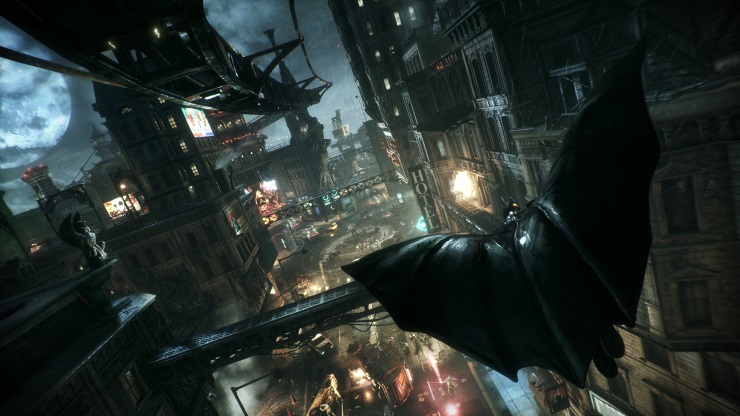Gotham has fallen. Scarecrow has united the Rogues Gallery of Batman’s villains, a feat the Joker’s anarchy prevented in the past. A year after Arkham City, the threat of toxic bombs planted across Gotham has seen the general population evacuated, with only the authorities and street gangs left. It’s this crisis that Batman is called upon to avert this time and… look, shall we just get the elephant in the room removed, here? The Batmobile works. It really works.
Arguably it’s the biggest change to the series so far. Sure, City introduced a sprawling open-world, but in many ways it was just a scaling up of Asylum’s island. To accommodate the Bats’ favourite mode of transportation, though, Gotham has been redesigned from the ground up. Streets are noticeably wider and there are fewer barricades. Rocksteady have been careful to make sure the ground level changes don’t impact the glide mechanic of previous entries, but the city is a lot more vertical this time around. It’s the best of both worlds.
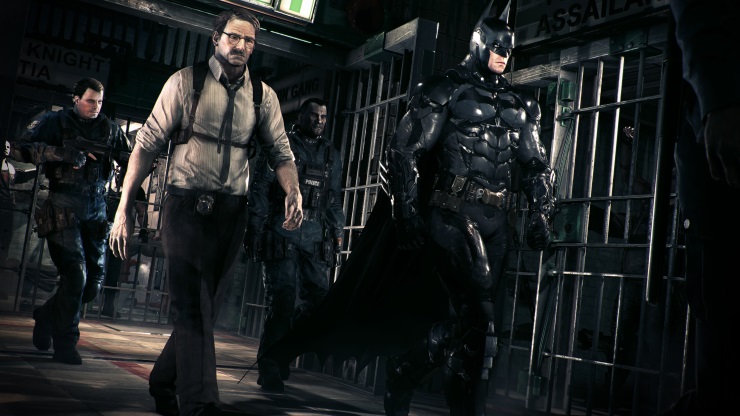
Being Batman has always been about nailing that feeling of power, an unstoppable force that will overcome any challenge, and it’s a feeling that’s translated well to the Batmobile. Hold R2 and you just go, ploughing through fences, bollards, and even cars. The streets are littered with stuff to destroy, but hitting anything short of a building won’t slow you down, let alone stop you.
Slippery handling means that you’ll leave a whirlwind of destruction in your wake, and a power-slide allows you to make the sharpest of turns, powering up an afterburner at the same time for good measure. You’ll rarely have to stop, keeping that relentless momentum up is obviously one of the aims: you can suddenly decide to go vertical and eject into a glide, gaining height instantly. Tap L1 anywhere in the outside world meanwhile and the Batmobile will appear straight away.
It’s as much a weapon as a means of transportation, though. Switching to a strafing mode allows movement in any direction while facing forward, and gives you a Gatling gun and canon to help dispense with enemies (though it’ll only stun humans). If it’s nearby in combat it’ll help out automatically – that’s if the enemies don’t run away at the sight of it in the first place – and it can even be remote controlled to help out with the occasional puzzle.
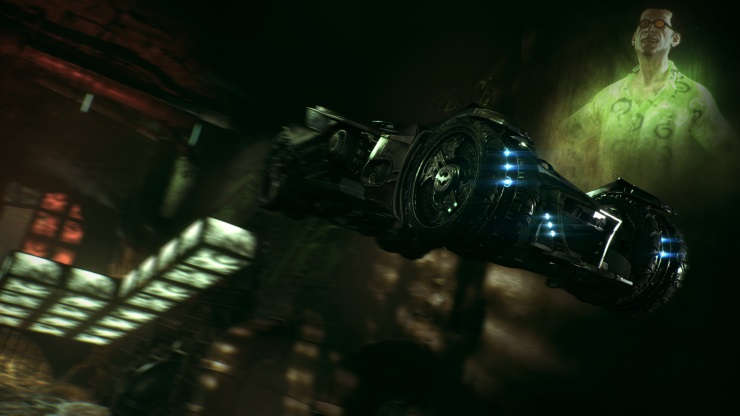
Some mission types will demand using the Batmobile, from chasing down the Firefly as he burns his way across the city to destroying the tanks of the Arkham Knight. Perhaps best of what I played was one of the new Riddler racetracks. Underground tunnels converted by the Riddler, these see you complete three laps of a changing course, moving platforms in and out of your way with the tap of a button. A proper test, they’re a logical extension of the previous games’ Riddler trophies (which are still present in the game) now that the Batmobile is involved, and are even framed well within the narrative.
Another mission I got my hands on showed off Arkham Knight’s other headline feature, Dual Play. This sees Batman team up with an ally for the occasional fight, and allows free switching between the two with a press of L1. My hands-on was with Nightwing (though Robin and Catwoman are also confirmed) as he and the Dark Knight took out one of the Penguin’s weapon caches. In combat, the one you aren’t controlling will be taken over by the AI, switch at the right time and you’ll do some pretty cool looking dual takedowns. The scene wasn’t long enough to work out whether Nightwing felt substantially different from Batman, but it certainly mixes up the combat a little bit. Fights in general are a little more chaotic, with a lot more enemies on screen, but the returning combat system – honed now from three games – looks like it can handle it.
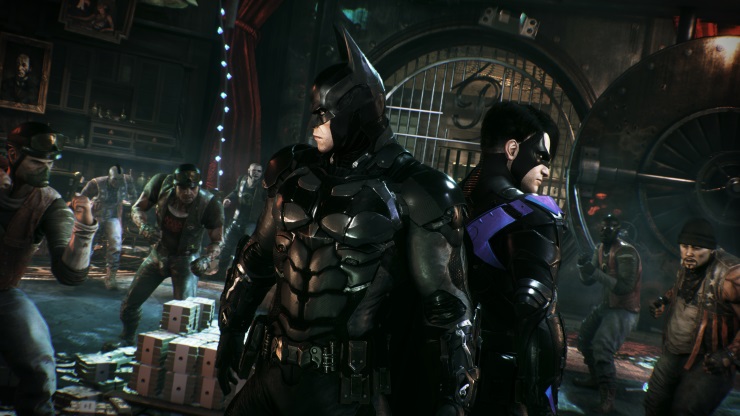
Things look on track presentation-wise too. Despite the wider streets, the city still looks dark and oppressive, with flashes of colour coming from neon signs or fires. There are fantastic seamless transitions between indoor and outdoor locations, too. One mission I played had me go into a building, open the roof shutters over the main hall then go back outside and drop through them, without a loading screen disguised as Batman going through a door in a very certain way. Rocksteady have promised this will continue across the game, and hopefully they’re right.
Likewise, the open-world appears to be full of things to do. Missions are selected from a radial wheel, with an icon for the main villain your chasing in each one as well as a percentage showing how far along that arc you are. From the look of it then you’ll have multiple objectives on the go at the same time – though I believe the section I played was put together especially for this demo. That, alongside the various Riddler trophies, racetracks, bombs to defuse, and people to save means that there will always be something to do.
I was concerned when Arkham Knight was announced. Asylum’s tight corridors had already made way for an open-world that felt a little sparse in City (with Knight’s world at least three times bigger than that), and with a focus seemingly on the Batmobile I wasn’t entirely sure what to expect. If Rocksteady can fill it with enough things to do and keep making good use of the Batmobile, then this could be the best Batman game yet, and a fitting conclusion to the Dark Knight’s story.
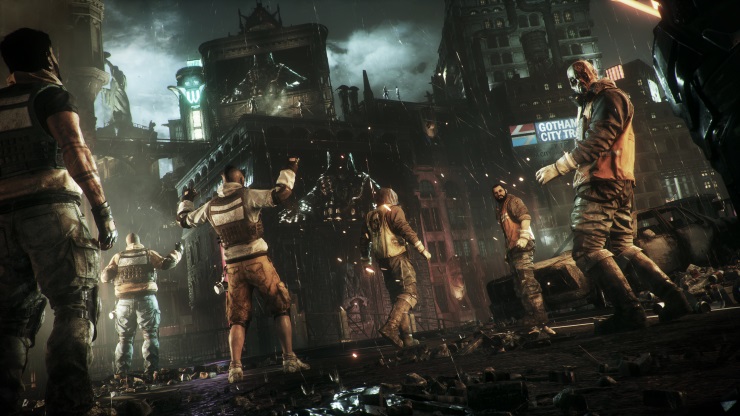
Read our interview with Gaz Deaves.


